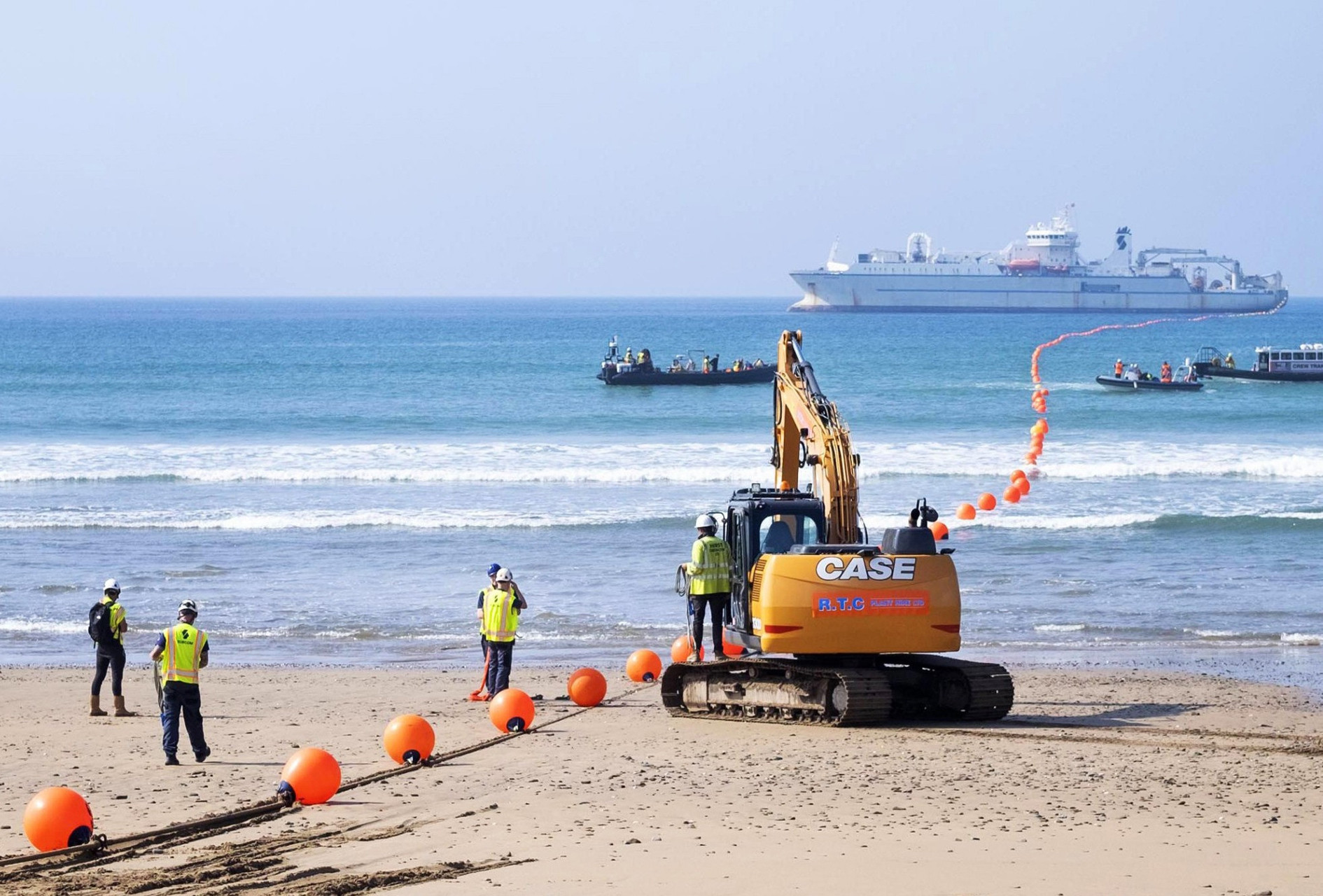
The cable made landfall in Quy Nhon and was brought online by Viettel Networks, a subsidiary of Viettel Group. The ADC project was developed with a total investment of USD 290 million in collaboration with nine leading telecommunications corporations: Viettel (Vietnam), SoftBank (Japan), Tata (India), Singtel (Singapore), China Telecommunications Corporation, China Telecom Global, China Unicom (China), National Telecom (Thailand), and PLDT (Philippines). Viettel is the only Vietnamese enterprise involved in the investment and deployment of the cable.
Spanning approximately 9,800 kilometers, ADC connects seven countries and territories: Vietnam, China, Hong Kong, Thailand, the Philippines, Singapore, and Japan.
It is the first Vietnamese cable route to directly link all three major Internet hubs of Asia - Singapore, Hong Kong, and Japan - enhancing Vietnam’s global connectivity.
With a maximum capacity of 50Tbps, ADC is not only the highest-capacity cable in Vietnam but also exceeds by 125% the combined international bandwidth of the five current systems (IA, AAE-1, APG, AGG, SMW-3). It also boasts faster speeds than any of its predecessors.
Initially, Viettel will activate part of the ADC bandwidth to boost international connectivity, meeting rising data demands and enhancing customer experience for internet-based services.
The new cable also strengthens Vietnam’s backup systems for international traffic, diversifies cable routes, and provides resilience in the event of undersea cable disruptions.
Beyond improving security and capacity, ADC supports advanced digital services that require high speeds and large bandwidths such as AI, 5G, Big Data, and AR/VR applications.
Viettel Networks, which managed the construction and now oversees ADC operations at Quy Nhon, is responsible for the entire global telecommunications and IT infrastructure of Viettel.
On June 14, 2024, the Ministry of Information and Communications approved Vietnam’s Strategy for Developing International Optical Cable Systems until 2030, with Vision to 2035.
The strategy affirms that international optical cable systems are a critical part of Vietnam’s digital infrastructure. These systems must be prioritized with advanced investment to secure ultra-high-capacity, ultra-broadband international connectivity - supporting the development of regional digital hubs.
The goal is to achieve autonomy in cable construction, operation, and maintenance while ensuring secure and stable Internet access for national digital transformation, defense, and economic development.
State-owned enterprises will spearhead cable deployments, with encouragement for domestic and international firms to co-invest, accelerating Vietnam’s rapid progress in global digital connectivity.
By 2035, Vietnam’s international cable system aims to rank among the region’s top in terms of quantity, capacity, and quality - creating competitive advantages for attracting large-scale data centers and cloud service providers.
The country seeks to become a critical link in regional and global data transmission infrastructure, enabling select urban areas to emerge as Digital Hubs and driving progress in the digital economy and society.
By 2030, Vietnam aims to deploy at least 10 new submarine cables using modern technology, raising its total to a minimum of 15 international cables with an aggregate capacity of at least 350Tbps. Of these, at least two cables will be fully Vietnamese-owned and directly connect to major regional digital hubs.
Thai Khang